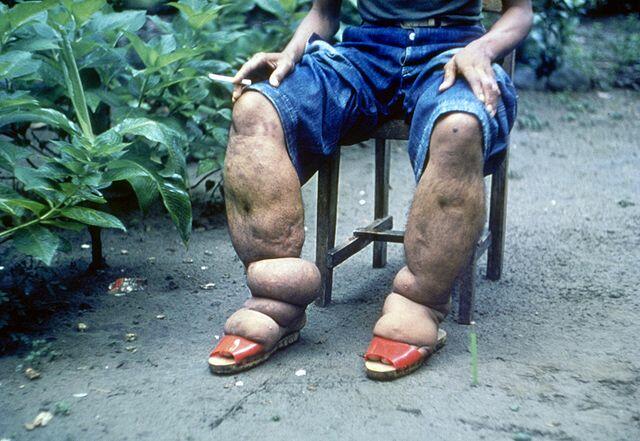
Researchers at LSTM have been working with colleagues in the NTD modelling consortium to look at the role that heterogeneity in mosquito biting plays within the transmission of disease and what impact vector control has on that heterogeneity.
While it is well known that some individuals within the same community may be exposed to a different number of mosquito bites, very few studies have been carried out to measure the causes of that heterogeneity, or variance, to understand its impact on the control of vector-borne diseases in a way that is relevant to decision making.
In a paper published today in the journal Proceedings of the Royal Society B the team, including LSTM’s Dr Lisa Reimer, uses modelling and surveillance data to investigate the relationship between spatial and individual heterogeneity in the context of lymphatic filariasis, finding that both measures are qualitatively different with profoundly different policy implications.
Vector borne disease control often relies on universal distribution of interventions, such as long-lasting insecticide treated bednets for malaria and mass drug administration for filariasis. These interventions are distributed in a heterogeneous environment – where humans experience different levels of exposure, due to both individual and spatial factors. Dr Reimer said: “In this study, we explored the links between heterogeneous mosquito bite exposure and filariasis infection and how relationships change with the distribution of bednets. We concluded that the sources of heterogeneity within a transmission system have different implications for the success of mass drug administration (MDA) in achieving elimination.”
Using infection and mosquito bite data for five villages in Papua New Guinea the team measured biting characteristics to model the impact of bednets on disease control and combined this with geospatial modelling. They found that when individual heterogeneity is high, a very high coverage of MDA would be needed to ensure the small group of individuals contributing to transmission are treated, and targeted treatment may be necessary. When spatial heterogeneity is high, different villages may have very different prevalence and the use of sentinel sites to determine regional elimination will not give an accurate picture.
“Our research in Papua New Guinea shows that the distribution of bednets increased heterogeneity in exposure,” continued Dr Reimer, “which could potentially lengthen the number of rounds of MDA required. However, we also found that the introduction of bednets reduced nightly biting enough to offset this effect. What is clear following this research is the importance of understanding sources of heterogeneity to the control and elimination of disease.”
Understanding heterogeneities in mosquito-bite exposure and infection distributions for the elimination of lymphatic filariasis
Michael A. Irvine, James W. Kazura, T. Deirdre Hollingsworth, Lisa J. Reimer
Proc. R. Soc. B 2018 285 20172253; DOI: 10.1098/rspb.2017.2253. Published 31 January 2018